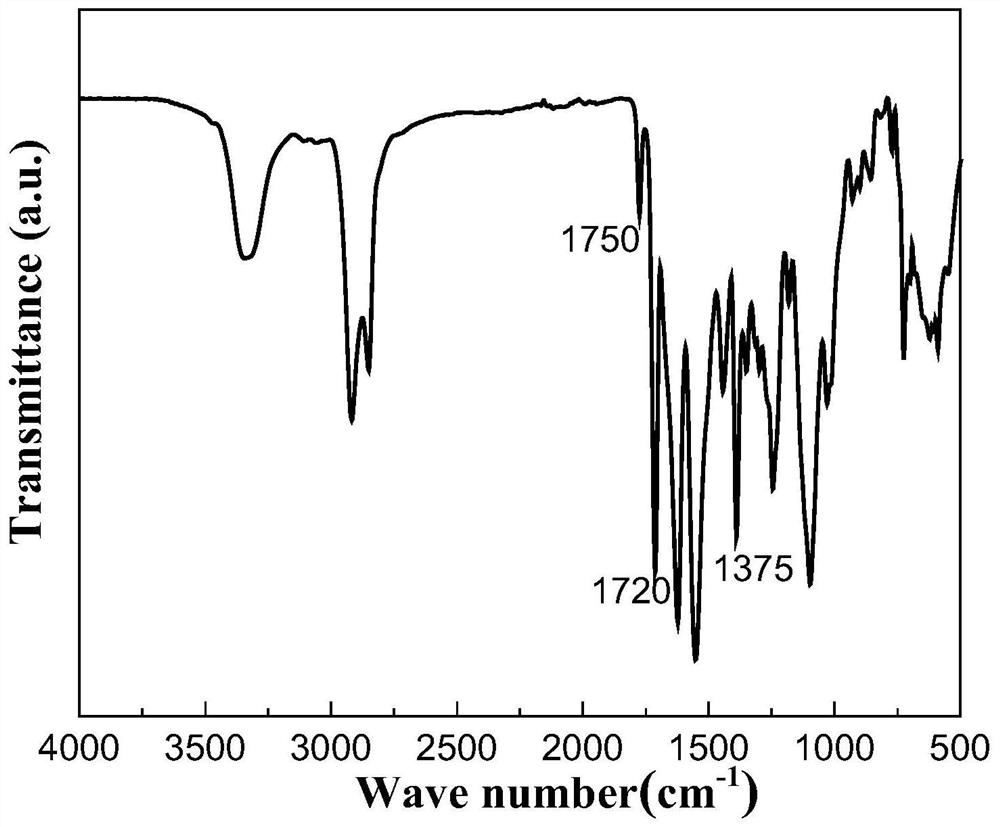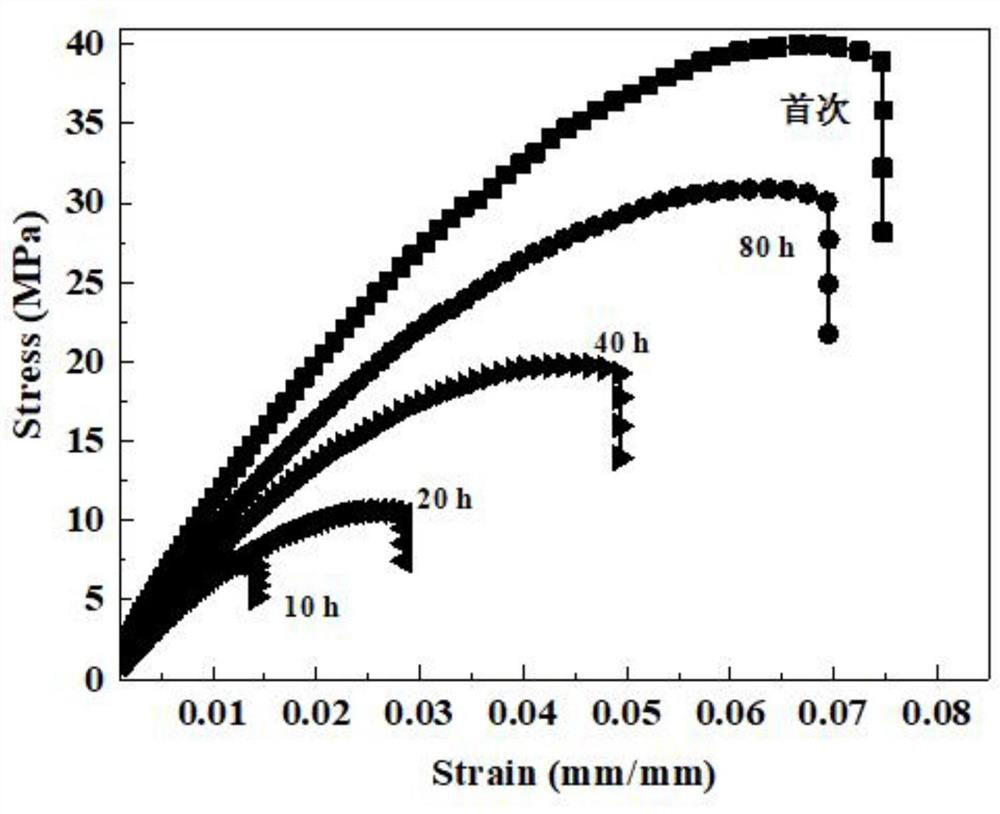Polyimide self-repairing material based on hydrogen bonds and preparation method thereof
A self-healing material, polyimide technology, applied in the field of polymer materials, can solve problems affecting material performance, uneven temperature distribution, etc.
- Summary
- Abstract
- Description
- Claims
- Application Information
AI Technical Summary
Problems solved by technology
Method used
Image
Examples
Embodiment 1
[0032] (1) Synthesis of soft-segment EM based on hydrogen bond self-healing: First, 0.1mol 2,2'-(ethylenedioxy)diethylamine was dispersed in 100mL of ultra-dry N,N dimethylacetamide. Inject argon, and stir at -10°C for 30 minutes. Then, 0.1 mol of dicyclohexylmethane-4,4′-diisocyanate was dispersed in 20 mL of ultra-dry N,N dimethylacetamide. Then, the dicyclohexylmethane-4,4'-diisocyanate solution was slowly dropped into the reactor and continued to react for 5 hours to obtain a soft segment EM dispersion with hydrogen bond self-healing.
[0033] (2) Synthesis of polyamic acid (PAA): Firstly, at -10°C, under argon atmosphere, 0.1mol 2,2'-(ethylenedioxy)diethylamine was completely dispersed in 100mL of N,N dimethyl In the acetamide solution, equimolar 4,4-diaminodiphenyl ether was added in 4 times, and reacted for 8 hours after the addition, the solution was brown and viscous, and polyamic acid (PAA) was obtained.
[0034] (3) In an argon atmosphere at -10°C, equal volumes o...
Embodiment 2
[0036] (1) Synthesis of soft-segment EM based on hydrogen bond self-healing: First, 0.1mol 2,2'-(ethylenedioxy)diethylamine was dispersed in 100mL of ultra-dry N,N dimethylacetamide. Inject argon, and stir at -5°C for 30 min. Then, 0.1 mol of dicyclohexylmethane-4,4′-diisocyanate was dispersed in 20 mL of ultra-dry N,N dimethylacetamide. Then, the dicyclohexylmethane-4,4'-diisocyanate solution was slowly dropped into the reactor and continued to react for 8 hours to obtain a soft segment EM dispersion with hydrogen bond self-healing.
[0037] (2) Synthesis of polyamic acid (PAA): Firstly, at -5°C, under argon atmosphere, 0.1mol 2,2'-(ethylenedioxy)diethylamine was completely dispersed in 100mL of N,N dimethyl In the acetamide solution, equimolar 4,4-diaminodiphenyl ether was added in 3 times, and reacted for 15 hours after the addition, the solution was brown and viscous, and polyamic acid (PAA) was obtained.
[0038] (3) In an argon atmosphere at -5°C, equal volumes of poly...
Embodiment 3
[0040](1) Synthesis of soft-segment EM based on hydrogen bond self-healing: First, 0.1mol 2,2'-(ethylenedioxy)diethylamine was dispersed in 100mL of ultra-dry N,N dimethylacetamide. Inject argon, and stir at -10°C for 30 minutes. Then, 0.1 mol of dicyclohexylmethane-4,4′-diisocyanate was dispersed in 20 mL of ultra-dry N,N dimethylacetamide. Then, the dicyclohexylmethane-4,4'-diisocyanate solution was slowly dropped into the reactor and continued to react for 10 hours to obtain a soft segment EM dispersion with hydrogen bond self-healing.
[0041] (2) Synthesis of polyamic acid (PAA): Firstly, at -10°C, under argon atmosphere, 0.1mol 2,2'-(ethylenedioxy)diethylamine was completely dispersed in 100mL of N,N dimethyl To the acetamide solution, add equimolar 4,4-diaminodiphenyl ether in 3-4 times, react for 12 hours after the addition, the solution is brown and viscous, and polyamic acid (PAA) is obtained.
[0042] (3) In an argon atmosphere at -10°C, equal volumes of polyamic ...
PUM
| Property | Measurement | Unit |
|---|---|---|
| tensile strength | aaaaa | aaaaa |
| strength | aaaaa | aaaaa |
Abstract
Description
Claims
Application Information
 Login to View More
Login to View More - R&D
- Intellectual Property
- Life Sciences
- Materials
- Tech Scout
- Unparalleled Data Quality
- Higher Quality Content
- 60% Fewer Hallucinations
Browse by: Latest US Patents, China's latest patents, Technical Efficacy Thesaurus, Application Domain, Technology Topic, Popular Technical Reports.
© 2025 PatSnap. All rights reserved.Legal|Privacy policy|Modern Slavery Act Transparency Statement|Sitemap|About US| Contact US: help@patsnap.com



